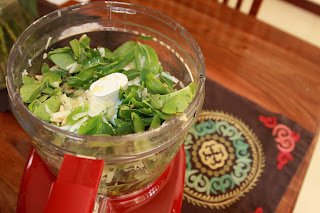The caramel mixture is quite simply a can of sweetened condensed milk, boiled for 2 hours and cooled - it's quite magical opening the tin and seeing caramel instead of white sticky condensed milk. I have no idea what the science behind it is, and why it works, but I enjoy the outcome and always boil 2 cans as it keeps in the fridge for about a month, and you can use the caramel in other recipes.
The only changes I make to his recipe is to use all of the tin of caramel (he uses two thirds of a tin) and to bake the shortbread base first, cool, spread on the caramel, crumble on the topping and bake again.
Caramel Shortbread
- 1 tin of condensed milk (397g)
- 250 grams unsalted butter, at room temperature
- 150 grams caster sugar
- 150 grams cornflour
- 300 grams plain flour
Method
- To make the caramel, put the tin of condensed milk into a deep saucepan and cover with water, by at least 2 inches (I put a clean tea towel in the bottom of the pot to stop the incessant tin on tin noise when the water simmers). Bring to the boil, reduce the heat, pop the lid on and simmer for 2 hours, keeping it topped up with water if the level gets close to the level of the top of the can. Set aside to cool completely before opening.
- Heat the oven to 170 degrees celsius (350 degrees F). Cream the butter and sugar until light and fluffy. Sift the two flours together and add to the butter mixture and mix lightly to form a dough. Press two thirds of the dough into a greased baking paper lined 20cm by 30cm tin. Bake for 15 minutes until firm, remove from the oven and cool slightly (about 5 minutes).
- Spread the tin of caramel over the top of the shortbread base, and crumble the remaining dough over the top of the base. Bake for 10 to 15 minutes until the top is golden brown.
Cool for 5 minutes and then cut into 1 inch squares, or larger slices if you prefer. Let it cool completely in the tin. Once cooled, put the jug on, invite your friends round and enjoy.










